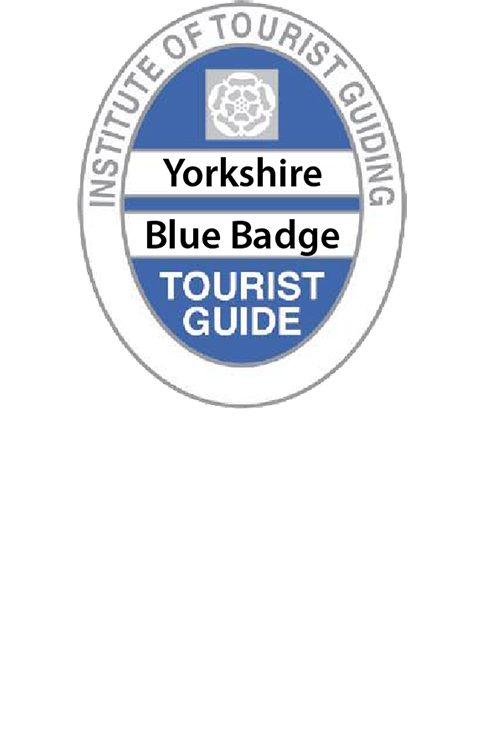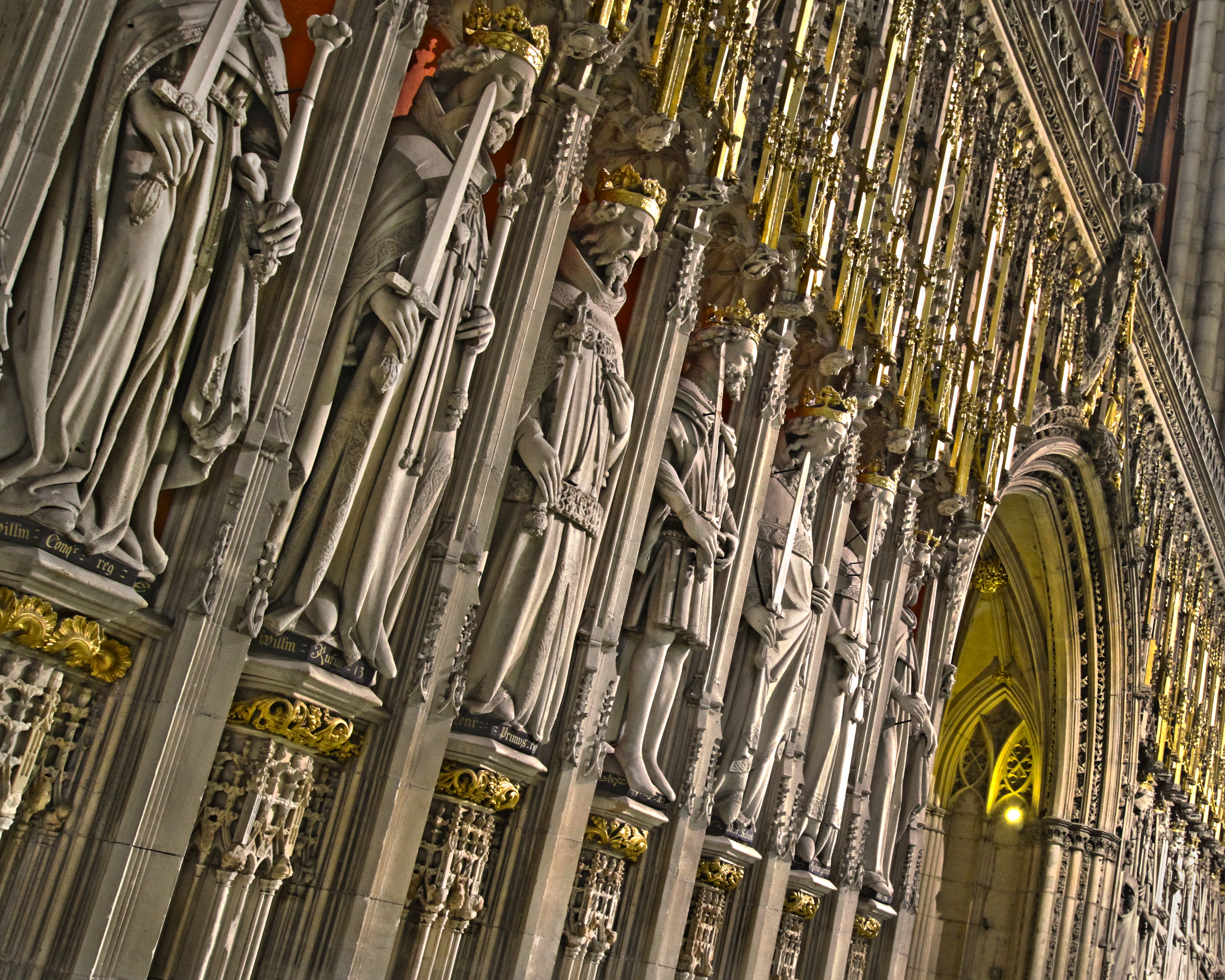“The history of York is the history of England,” said King George VI, and it was in York where his grandson, King Charles III, revealed the first statue of our late Queen to be unveiled since her death in September 2022. The King entered the city from the south by way of Micklegate Bar, and requested permission to enter the city from the Lord Mayor, as half a dozen monarchs have done before him.
As you amble through the walled city of York, you stumble across all manner of Royal associations – if you know where to look …. Some are so obvious that the eye is drawn straight to them: for instance, the striking 15th century Kings’ Screen that separates the Choir from the Nave of York Minster. Or the beautiful rose window, restored after the 1984 fire, showing the white heraldic rose of the Royal House of York combined with the red rose of the House of Lancaster to form the Tudor rose after the Wars of the Roses and the wedding of Elizabeth of York to Henry VII in 1486. Others are less obvious, yet well worthy of discovery: for example, the only Royal tomb in York Minster.
Every one of the city’s buildings tells a story and therein lies their charm, for example the King’s Manor tucked away near the Art Gallery, or the York residence of King Charles I’s ‘Groom of the Bedchamber’, the man requested by the King to “lie by his Bed-side upon a Pallat” the night before the King’s execution.
But this is a Right Royal Yomp not just through York, but throughout the largest county in England. York’s statue of Queen Elizabeth II shows her in her Garter Robes. In her hand she holds an orb surmounted by a cross: a reminder that the monarch’s power derives from above. The Yorkshire flag with its heraldic white rose is flown proudly across the county: a constant reminder that this is God’s Own Country favoured by monarchs.
Yorkshire was particularly favoured by King Richard III, the monarch who undoubtedly spent more time in Yorkshire than any other. As Duke of Gloucester, he inherited lands at Middleham in what was later to become the Yorkshire Dales, and the castle there became one of his favourite residences. He was killed in the final battle of the Wars of the Roses at Bosworth Field near Leicester, and after identification of the famous body under the carpark in 2012, York had a strong case for the King’s mortal remains to be returned to his adopted county.
As one might expect, Yorkshire is home to many of the Wars of the Roses battle sites: Towton, Wakefield, Topcliffe, to name but a few. And then the Civil Wars of the 1600s was played out at castles at Knaresborough, Skipton, Helmsley, Scarborough, Sheffield and many others, including Bolton Castle in the Yorkshire Dales, where, less than 80 years earlier Mary, Queen of Scots had been held.
Yorkshire has always occupied a strategic position on our island, hence the reason why Kingston-upon-Hull was appointed the “King’s Town upon the River Hull” – the port was bought by King Edward I in 1293 to use as a supply base for his military campaigns in Scotland. By the 1640s the town was a major European trading port, and the first act of defiance during the English Civil War was when King Charles I was refused entry to the city at Beverley Gate by Parliamentarian Sir John Hotham.
King Charles I was presumably astride a horse when Sir Hotham barred that city gate. You won’t see a statue of him in Hull, but when you step out of Leeds station, one of the first things you spot is an equestrian statue of a Royal personality from three centuries earlier: the son of King Edward III, known as the Black Prince. And of course the Royal Armouries displaying King Henry VIII’s combat armour from 1520 have to be included on the itinerary of anyone on a Right Royal Yomp through Yorkshire!
Whilst on the subject of Leeds, let’s step forward in time to today’s Royal family. A strong Yorkshire bloodline has been introduced through the Princess of Wales, whose father Michael Middleton, was born in Leeds and whose ancestors possibly hailed from Middleton near Wakefield, becoming prosperous wool merchants by the 18th century.
Today the Royals are frequent visitors to Yorkshire, seen at Harrogate’s Great Yorkshire Show, at Yorkshire’s many racecourses, and on private visits to private stately homes, charities, schools, hospitals, factories, art galleries, places of worship.
Contributed by Tess Pike, Yorkshire Blue Badge Guide – https://yorkshiresbestguides.co.uk/project/tess-pike/


